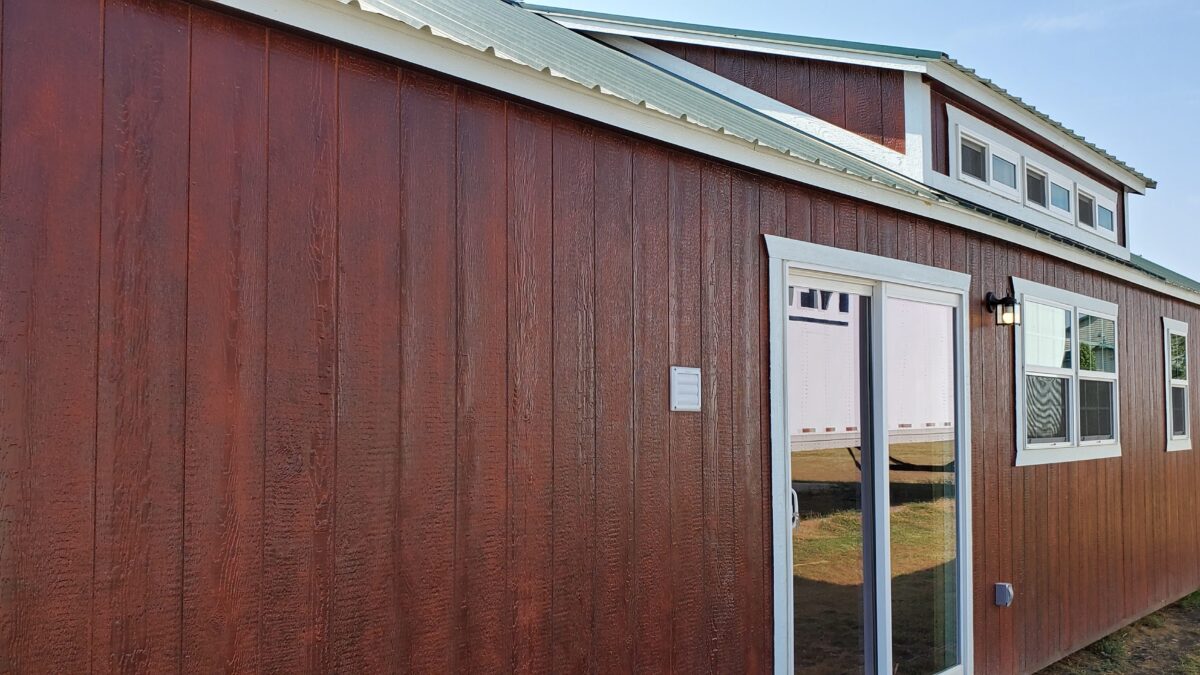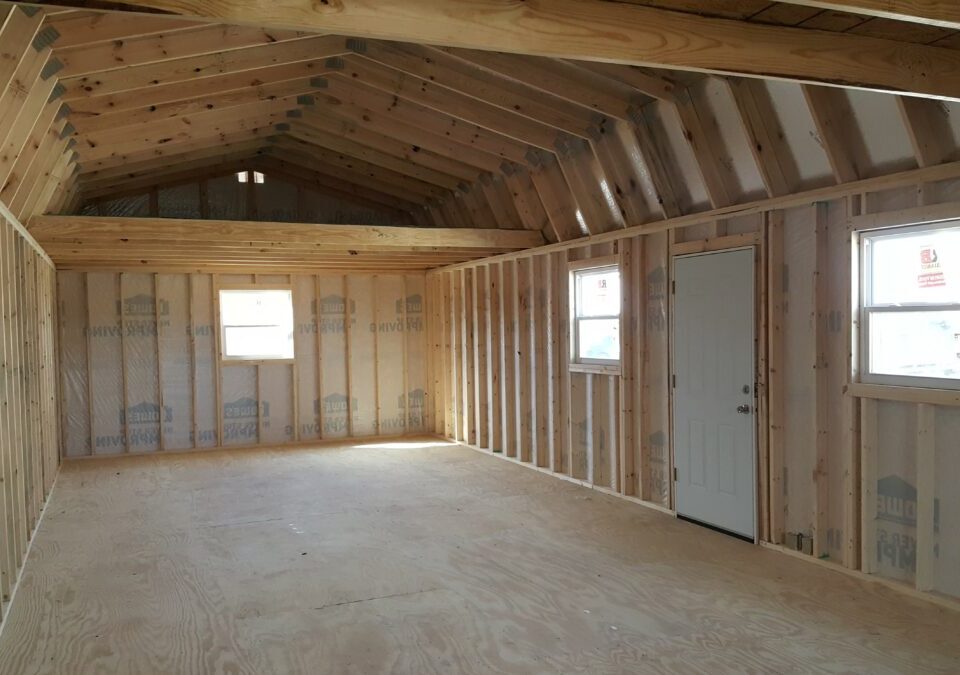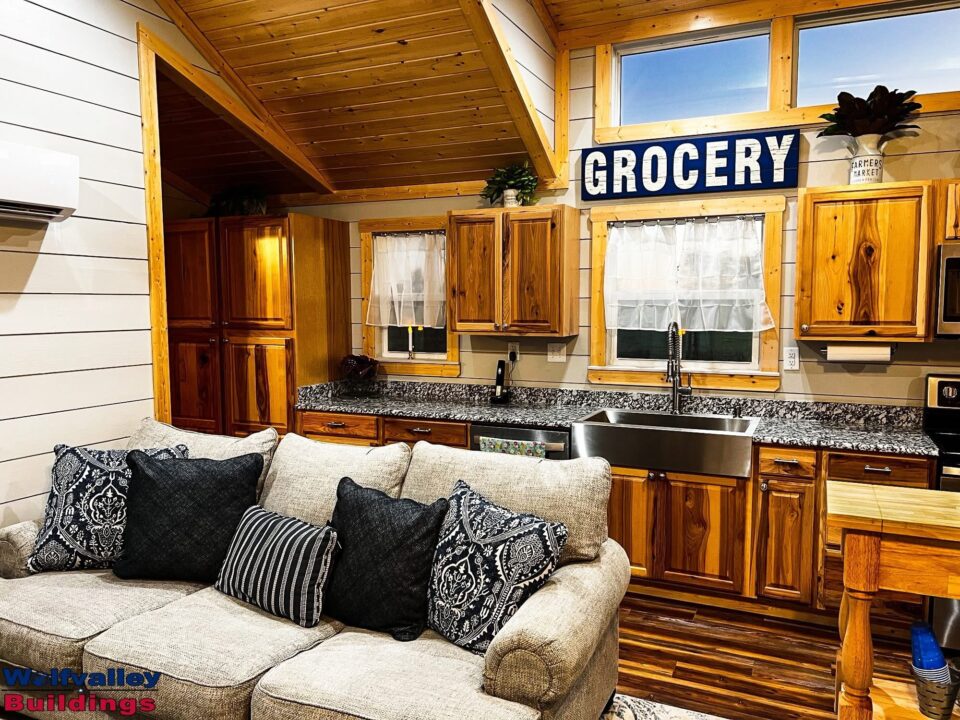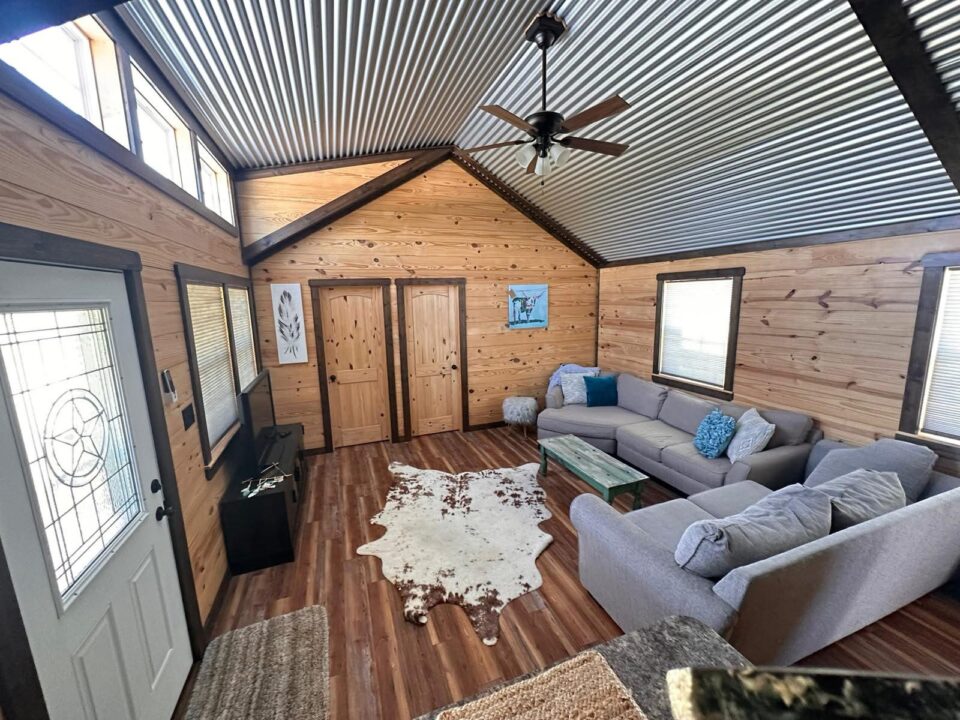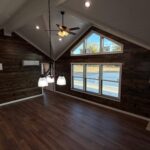
Best Texas Tiny Home Properties to Build or Buy
July 16, 2025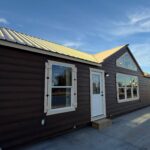
How to Buy a Tiny Home from Wolf Valley
July 18, 2025Utility Setup Tips for Tiny Homes 🔌🚿🔥
Tiny home living is all about simplicity—but when it comes to utilities, things can get complex fast. Setting up water, power, and waste systems in a small space requires strategy, especially if you want to stay efficient and cost-effective. Whether you’re planning to go fully off-grid or want a traditional hookup on your land, these utility setup tips for tiny homes will help you stay ahead of the curve.
Unlike traditional homes, tiny homes can’t rely on overbuilt systems. Every inch counts, and every connection should serve a clear purpose. At Wolf Valley, we build homes that support a wide range of utility configurations—from modern community lots to completely self-sufficient setups. Knowing your options is the first step toward building a tiny home that truly works for you.
Start with Your Power Plan ⚡
Before you decide on interior layouts or appliance packages, think about how you’ll power your home. Your utility setup begins here. If you’re placing your tiny home in a community or on developed land, grid-tied electric is the simplest and most common option. Many rural properties in Texas already include electric hookups, especially if they’ve been used for RVs or mobile homes in the past.
If you’re headed off-grid, solar becomes the go-to solution. A compact panel array paired with a battery storage system can power lights, laptops, water pumps, and small appliances. Energy efficiency becomes even more important in this setup. LED lighting, induction cooktops, and low-wattage appliances help stretch every amp-hour. For backup or remote builds, some tiny homeowners also add a portable generator, often fueled by propane.
Whether on or off the grid, be sure your Wolf Valley tiny home is wired with safety and future upgrades in mind. We can design your electrical system around your needs—whether that’s a standard 30-amp RV hookup or a full 200-amp panel for long-term land use.
Think Through Your Water Access 💧
Water is essential, but access and storage vary depending on where you build. If your land already has a well or city water line, you’re ahead of the game. Connecting to water through a buried line or hose is straightforward, and your Wolf Valley home can be prepped for that with inlet ports, interior plumbing, and water heaters built for small-space efficiency.
For off-grid land, rainwater collection systems are a strong option. They pair well with storage tanks and filters to provide clean water for drinking, cooking, and bathing. Barrels can sit under rooflines, while larger cisterns may be buried or tucked beside your home. Another route is hauling water to your property and storing it in a gravity-fed or pressurized tank. This approach is common in remote areas with no infrastructure and works well for part-time living or weekend getaways.
Greywater—used water from sinks and showers—needs careful disposal if you’re not connected to septic. Many off-grid setups use gravel-filled leach pits or above-ground garden systems to filter and reuse water for plants. With the right design, your water use stays low and your system stays simple.
Plan for Waste and Septic Early 🚽
One of the biggest considerations in any utility setup is how to handle waste. If your property already has a septic system, your tiny home can be plumbed directly into it. This offers the convenience of flush toilets and normal drains. However, not all land is permitted for septic, and installing a new system can be costly and time-consuming.
That’s where alternative systems come in. Composting toilets are increasingly popular among tiny homeowners. They use no water, require little maintenance, and are legal in many Texas counties. Brands like Nature’s Head offer easy-to-use models that fit well into small bathrooms and reduce your environmental impact.
Other options include incinerating toilets or mobile blackwater tanks that can be pumped periodically. Whichever system you choose, it’s best to confirm with your local health department before installation. Wolf Valley tiny homes can accommodate a variety of layouts based on your waste disposal choice, including dry toilet closets and full bathroom plumbing.
Heat, Cooling, and Propane Considerations 🔥❄️
Heating and cooling may not be the first thing you think of, but comfort matters—especially in Texas. Mini-split HVAC units are ideal for tiny homes because they’re efficient, quiet, and easy to install. These systems handle both heating and cooling in one compact wall-mounted unit and run on standard electrical connections.
For colder climates or winter nights, many owners add a small electric space heater or propane heater as backup. Propane also comes in handy for cooking, hot water, and even off-grid refrigeration. We often install sealed propane storage in custom-built boxes or under-deck compartments to keep tanks safe and out of sight.
If you’re planning to use propane regularly, you’ll need space for tanks and access for refills or exchanges. Wolf Valley designs often include propane-ready lines and secure exterior panels that keep your utilities neat and accessible.
Make Room for Growth 📈
Even if you’re starting small, plan for upgrades down the road. Want to add a second unit later? Looking to build a garden shed with power? Thinking about expanding to a multi-home setup for family or friends? Your utility layout today should support those goals tomorrow.
That’s why we recommend placing utility lines and connection points with expansion in mind. Use outdoor-rated boxes, conduit, and labeled shut-offs where possible. Keep records of where water and electric enter your home. And always give yourself access to shutoffs and connections without having to crawl under the structure.
A good utility setup in a tiny home isn’t just about comfort—it’s about freedom. The freedom to build where you want, to live within your means, and to live lightly on the land while staying warm, connected, and clean.
At Wolf Valley, we walk with our customers through these decisions every day. Because we don’t just build structures—we build solutions that last. With the right utility setup, your tiny home becomes a place that supports you through every season, every goal, and every mile down the road.
Internal Links:
Cabin Bedroom Highlight: A Peaceful Space Designed for Rest



